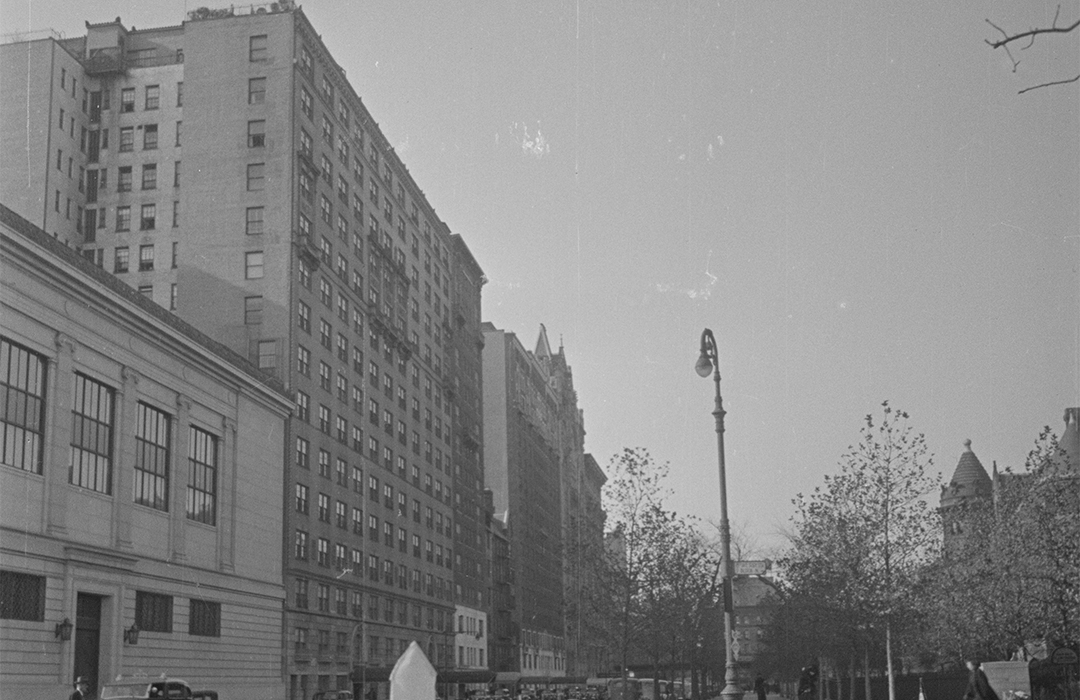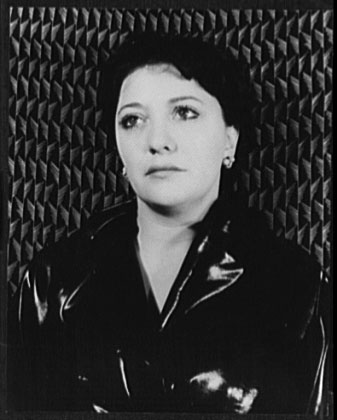
6-16 West 77th Street
by Tom Miller
The six limestone-faced, Beaux-Arts style rowhouses at 6 through 16 West 77th Street were sumptuous, but they would not last long. Completed in 1904, they were demolished 23 years later by the newly formed 6-16 West 77th Street Corporation. The syndicate hired architect Nathan Korn to design two matching, 15-story apartment and penthouse buildings on the site.
The neo-Renaissance style structures were completed in September 1928. Less than a month later, on October 8, 1928, The Skyscraper Times reported that all 103 apartments were rented. The article noted they were “divided into suites of from three to seven rooms, several of which have been combined into duplexes of nine and ten rooms.” An advertisement offered five-room apartments for $2,000 per year, or about $3,330 a month by 2024 terms. A seven-room apartment cost the equivalent of $4,600 per month today.
Among the earliest residents of 6 West 77th Street was singer and actress Helen Morgan. Born in 1900, she starred as Julie LaVerne in the Broadway musical Show Boat in 1927, and in 1929 appeared in the title role of Hammerstein & Kern’s Sweet Adeline. On July 18, 1933, the Fulton County, New York newspaper The Morning Herald reported, “Helen Morgan, piano-sitting blues singer of New York, and Maurice Maschke, Jr., son of Cleveland’s Republican leader, were married in New Castle May 15.” The article noted that the 28-year-old Morgan, “who won fame through her appearance in musical shows,” lived at 6 West 77th Street, while her husband lived in Cleveland, Ohio. Their marriage ended two years later.
Completed in 1904, they were demolished 23 years later by the newly formed 6-16 West 77th Street Corporation.
Another well-known resident was Stephen B. Gibbons, the former Assistant Secretary of the Treasury, who leased a seven-room apartment in 6 West 77th Street in October 1939. He was currently the vice-president of the Hudson Trust Company.
Emanuel (known as Manny) and Anna Wolf lived here at the time. Born on the Lower East Side in 1890, Wolf’s father ran a restaurant on Forsyth Street. Upon his death, the teenage Manny took over the operation. It became famous for its American cuisine, particularly its steaks and chops. The New York Times remarked, “Former President Theodore Roosevelt was a steady customer in the old days, as were ex-Mayor James J. Walker and other public officials.” In 1936, the Manny Wolf restaurant moved to East 49th Street. By now, it was so large that it required 75 employees. Manny Wolf suffered a fatal heart attack in the apartment on December 12, 1940, at the age of 50.
Other well-known residents of 16 West 77th Street included novelist, biographer, and literary critic Louis Kroenberger. Born in Cincinnati, he became drama critic for Time magazine in 1938 and continued in that position until 1961. In 1940, he married Emily L. Plaut. That year, he took another job as critic for PM magazine, working there until 1948.
Frank Miller worked as the doorman at 16 West 77th Street in 1936. He got a tremendous shock on the morning of January 26, 1936, when he sauntered over to the sidewalk trash can “and jumped back about half a block,” according to the New York Evening Post. The article said, “A few minutes later he looked again. It was still there, a five-foot Texas bullsnake, all curled up in a black box and dozing peacefully.” Miller took the box across the street to the American Museum of Natural History, “where it was put into a comfortable cage in the tropical laboratories of the herpetology department,” said the article. As it turned out, the reptile had escaped from Sonia Kasten, a snake charmer, while she rode in a taxicab from Brooklyn to Manhattan. “Its name is Ranger,” she told police, “and it is tame.”
He made it about as far as Allentown, Pennsylvania, when his car was hijacked.
Gerson Brener, who lived at 6 West 77th Street, was the head of the furrier firm Gerson Brener, Inc. On the night of January 4, 1950, he loaded his vehicle with valuable furs and headed to Pittsburgh to deliver them to a customer. He made it about as far as Allentown, Pennsylvania, when his car was hijacked. He told the detective on the case (whose name was, perhaps appropriately, Peter J. Mink) that the 54 coats and five bundles of Russian broadtail skins were valued at “nearly $20,000,” according to the Tarrytown, New York Daily News. The heist, not including Brener’s automobile, would equal about $253,000 today.
Producer Walter Fried and his wife, the former Florence Reid, were residents of 16 West 77th Street in the second half of the century. A graduate of Columbia College and Columbia Law School, Fried had joined the legal department of Warner Bros. After several years there, in 1937, he was asked to be the general manager of the Broadway show The Amazing Doctor Clitterhouse. It was the beginning of a remarkable Broadway career. In 1939, he became general manager of the hit comedy Life with Father, which ran until July 1947. Other of his successes were Henry Miller’s Death of a Salesman in 1949, The Bird Cage, and the 1952 comedy-drama The Time of the Cuckoo.
In 2024, a proposal to replace the penthouse level of 6 West 77th Street previously occupied by author Nancy Friday was submitted to the Landmarks Preservation Commission for consideration. The two-story, mostly glass Norman Foster-designed structure would, unlike the current penthouse, be seen from the street.
Tom Miller is a social historian and blogger at daytoninmanhattan.blogspot.com



